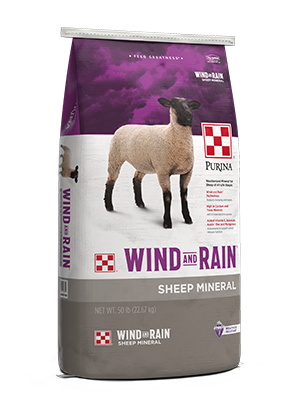
Does Your Ram Fertility Add Up?
Wellness : Health
Wellness : Nutrition

Keep your rams in shape to breed.
Reproduction is a 1﹢1, and, in sheep breeding, results often equal two or more lambs. In most cases, the attention focuses on the ewe side of the equation. Ewes do all of the work following insemination to maintain the pregnancy and ensure multiple lambs are born.
However, you can’t ignore the other side of the equation – the ram. Proper ram management and nutrition before and during the breeding season will guarantee rams are ready to perform.Here are some tips to ensure ram fertility adds up to a successful breeding season:
Nutrition’s role in ram fertility
Rams must be in good body condition before breeding season turnout. Breeding is an intensive task with rams covering anywhere from 25 to 100 ewes, depending on the situation. A body condition score of 2.5 to 3 on a scale of 5 points ensures rams have enough condition to maintain energy levels during the breeding season.If a ram is too thin at the start of the breeding season, he will wear down, become weak and breed fewer ewes. The same goes for obese rams that tend to have reduced libido and won't follow ewes for breeding.
Keeping rams in proper body condition starts at least four months before the breeding season. Maintain rams’ nutrition during this period using a balanced supplement. High-fat supplements with low protein like Purina® Delta Lamb & Ewe Breeder DX30 are options since they provide rams additional energy to add condition while being highly palatable to optimize feed intake.
Also, it is important to feed rams supplements low in protein because it reduces pizzle rot. When rams ingest protein in excess of 16%, it causes a build-up of urea that leads to an infection in the sheath, known as pizzle rot, that can damage the penis. Both Purina® Delta Lamb & Ewe Breeder DX30 is low in protein, helping keep rams in ideal health and condition.
Testing ram fertility
An important first step to guarantee your rams will get ewes bred is to have a veterinarian perform a breeding soundness exam on each ram.The following tests will be performed during a breeding soundness exam:
- Physical exam: Evaluate the ram’s structure, such as body condition score, hooves, legs, teeth and eyes.
- Scrotal measurement: A scrotal circumference is taken with a measuring tape. At a year-old, rams should have a minimum measurement of 28 cm.
- Semen morphology: An evaluation looking at whether the sperm cells are normal or abnormal. A passing exam requires a minimum of 70% normal sperm. If white blood cells are present in the semen sample, it’s a sign of infection and may require the ram to be treated and held from breeding.
- Semen motility: A test analyzing how well the semen moves. Ideally, a ram should score 70% or better for motility, with a minimum score of 30% for a ram to pass.
Five management considerations
Maximizing ram fertility takes thoughtful management, considering the needs of both rams and ewes. Follow these five guidelines to improve the breeding performance of your flock:- Turnout age: Most rams reach puberty by seven months old and are ready to breed.
- Retirement age: Generally, after six years old, a ram will begin to see limited performance. Body structure, arthritis and hoof health are common ailments in mature rams. Consider culling older rams from the flock to maintain fertility.
- Number of ewes: A young ram less than a year-old can cover 25 ewes in a pasture and 50 ewes in a pen. Mature rams can cover 50 ewes on pasture and up to 100 ewes in a pen.
- Commingling rams: In large pastures or range situations, running multiple rams is necessary for proper coverage. For pen breeding, one ram per pen of ewes is the best option to limit fighting and potential injuries. When rams aren’t with ewes for breeding, consider penning or pasturing them together so they can establish a pecking order before the breeding season.
- Length of breeding season: Each breeding cycle lasts approximately 21 days. Leaving rams out for a minimum of 63 days allows them to cover ewes for at least three breeding cycles.
Want more sheep nutrition tips? Sign up for our e-tips program.



